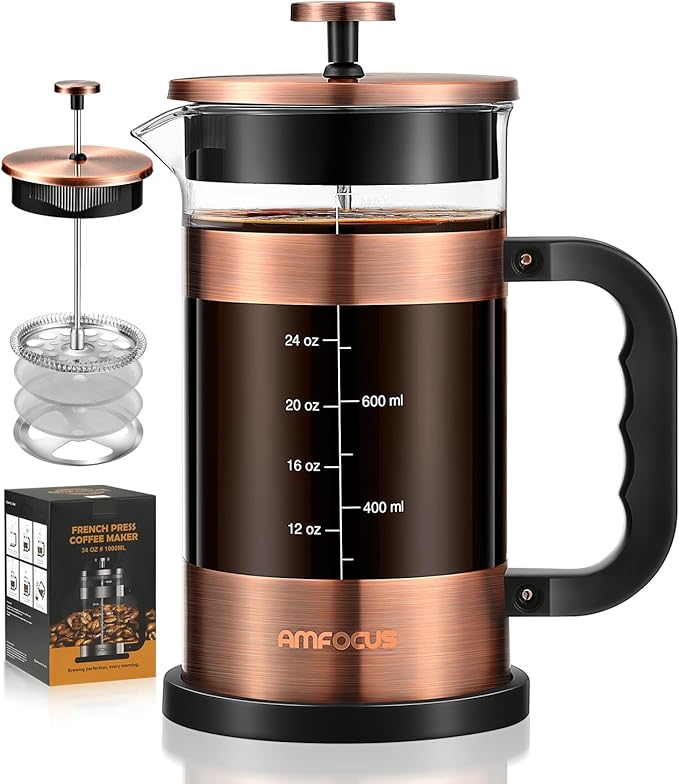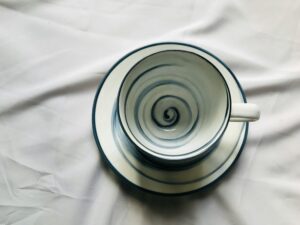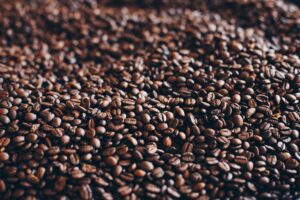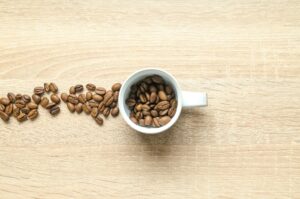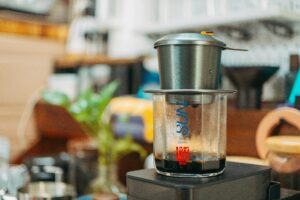Coffee is more than just a drink—it’s a ritual, a comfort, and for many, a way to start the day. Among the many ways to brew coffee, the French press stands out as one of the simplest yet most rewarding methods. Whether you’re new to the world of coffee or a seasoned enthusiast looking to perfect your technique, the French press offers a full-bodied and rich flavor that’s hard to match. In this guide, we’ll take a deep dive into everything you need to know to master the art of French press coffee—from choosing the right beans to the perfect brewing process.
Table of Contents
What Is a French Press?
Also known as a press pot or plunger pot, the French press is a manual coffee maker that uses a mesh plunger to separate the grounds from the liquid. It was first patented by Italian designer Attilio Calimani in 1929, but over time, it became associated with French coffee culture. The beauty of the French press lies in its simplicity: no electricity, no paper filters, and no complex parts. All you need is hot water, ground coffee, and a few minutes of patience.
Unlike drip machines or espresso makers, the French press allows coffee grounds to steep directly in hot water, which extracts more oils and soluble compounds from the beans. The result? A fuller, more robust flavor with a velvety texture.
Why Choose a French Press?
There are several reasons coffee lovers gravitate toward the French press. For one, it’s incredibly easy to use and clean. You have full control over the coffee-to-water ratio, water temperature, and steeping time—essential factors that can make or break your brew. Additionally, since it doesn’t use paper filters, the French press preserves the natural oils in coffee that contribute to its flavor and mouthfeel. The end result is a rich, aromatic cup with deep complexity and a slightly heavier body.
What You’ll Need to Get Started
Before you begin brewing, it’s essential to gather the right tools and ingredients. Here’s a basic checklist:
- A French press: Available in various sizes, from single-serve (12 oz) to family-sized (34 oz and up).
- Freshly roasted coffee beans: Preferably whole beans to grind fresh for maximum flavor.
- A burr grinder: For a consistent coarse grind, which is crucial for French press brewing.
- Filtered water: The quality of your water matters as much as the beans.
- A kettle: Gooseneck or standard; ideally with a thermometer for precise temperature control.
- A kitchen scale (optional but recommended): Helps measure coffee and water accurately.
French Press Coffee Maker – 34 Ounce
Step-by-Step Guide to Brewing French Press Coffee
1. Choose the Right Coffee Beans
Start with high-quality beans that match your flavor preferences. Whether you like a light, fruity Ethiopian roast or a deep, chocolaty Sumatran, the freshness of the beans is key. Always opt for whole beans and grind them right before brewing.
2. Grind the Beans Coarsely
A coarse grind is essential for French press brewing. It should resemble sea salt or breadcrumbs—not too fine, or you’ll end up with a sludgy cup. A burr grinder is ideal for achieving this consistency. Blade grinders tend to produce uneven results, which can affect extraction and taste.
3. Measure Your Coffee and Water
The ideal coffee-to-water ratio is generally 1:15 to 1:17, depending on how strong you like your coffee. For example, if you’re using 30 grams of coffee, use 450-510 ml of water. Weighing your ingredients with a scale helps maintain consistency from one brew to the next.
4. Heat the Water
The optimal brewing temperature for French press coffee is between 195°F and 205°F (90°C to 96°C). Water that’s too hot can burn the grounds, while water that’s too cool won’t extract enough flavor. If you don’t have a thermometer, bring the water to a boil and let it sit for 30 seconds before pouring.
5. Preheat the French Press (Optional)
Pour some hot water into the French press to warm it up. This helps maintain the brewing temperature and prevents heat loss. Swirl it around and discard the water before adding the coffee grounds.
6. Add the Coffee Grounds
Place your coarsely ground coffee into the bottom of the press. Gently shake the press side to side to level the grounds for even extraction.
7. Start the Brew
Pour half of your hot water over the grounds in a circular motion, ensuring all grounds are saturated. This step, known as the “bloom,” allows trapped gases to escape and enhances flavor extraction. Let it sit for 30 to 45 seconds, then pour in the remaining water.
8. Stir and Steep
Gently stir the mixture with a wooden or plastic spoon (to avoid breaking the glass). Place the lid on the press with the plunger pulled up. Let the coffee steep for about 4 minutes. For a stronger brew, you can extend this to 5 minutes.
9. Press the Plunger
After steeping, slowly press the plunger down using even pressure. Don’t rush this step—too much force can cause grounds to escape into your cup or even crack the glass.
10. Pour and Enjoy
Serve immediately to avoid over-extraction, which can make the coffee taste bitter. If you’re not drinking all of it right away, transfer the remaining coffee into a thermal carafe to keep it warm without continuing the steep.
Tips for a Better French Press Brew
Mastering the French press takes a bit of trial and error, but here are some tips to elevate your brew:
- Always use fresh, filtered water. Tap water with high mineral content or chemical taste can ruin even the best beans.
- Don’t let the coffee sit in the press. The longer it stays in contact with the grounds, the more bitter it becomes.
- Clean your French press thoroughly after every use. Old oils and residue can taint the flavor of future brews.
- Experiment with steeping times and ratios. Your perfect cup might be slightly different from someone else’s.
Common French Press Mistakes to Avoid
One of the biggest issues people encounter is using the wrong grind size. Too fine, and you’ll get sludge in your cup; too coarse, and the coffee might taste weak. Another mistake is not measuring the coffee or water, leading to inconsistent results. Finally, avoid plunging too aggressively, as it can stir up sediment or break the mesh filter.
How Does French Press Compare to Other Brewing Methods?
Compared to drip coffee, French press has a richer mouthfeel and bolder taste because of the direct immersion brewing and lack of paper filters. It’s also more forgiving—you don’t need to be as precise with pouring techniques as with pour-over methods. While espresso has a more concentrated flavor, the French press is ideal for those who enjoy savoring a larger, more aromatic cup.
Cleaning and Maintaining Your French Press
After each use, disassemble your French press and rinse all components thoroughly. Some parts may be dishwasher-safe, but handwashing is usually best for longevity. Use a mild detergent and avoid abrasive sponges. Every few weeks, do a deeper clean by soaking the parts in a mixture of water and vinegar or baking soda to remove oil buildup.
Frequently Asked Questions
1. Can I use pre-ground coffee in a French press?
Yes, but it’s not ideal. Most pre-ground coffee is too fine for French press brewing, which can lead to over-extraction and a muddy cup. If you must use pre-ground coffee, look for one labeled specifically for French press or coarse ground.
2. How long should I steep my coffee in a French press?
The standard steeping time is 4 minutes, but this can be adjusted depending on your taste preferences. A longer steep time will result in a stronger, bolder cup, while a shorter time may produce a lighter flavor.
3. Why does my French press coffee taste bitter?
Bitterness can be caused by over-extraction, which usually happens when the grind is too fine or the steeping time is too long. Make sure you’re using a coarse grind and steeping for the right duration.
4. Can I make cold brew in a French press?
Absolutely. Simply use coarsely ground coffee, add cold water, stir, and steep in the fridge for 12–16 hours. Press and pour when ready. It’s an easy way to make smooth, low-acid cold brew.
5. Is French press coffee stronger than drip?
In terms of body and flavor, yes. French press coffee is often perceived as stronger because it retains more of the coffee’s natural oils and fine particles. However, in terms of caffeine content, the difference is minimal and depends more on the type of beans and ratio used.
6. What size French press should I buy?
It depends on how much coffee you typically drink. A standard 34 oz (1-liter) French press makes about 4 cups. If you usually brew just for yourself, a smaller 12 oz version might suffice.
Final Thoughts
French press coffee is one of the most rewarding brewing methods you can master at home. With minimal equipment and a few simple techniques, you can consistently make coffee that rivals your favorite café. The rich, full-bodied flavor and the ritual of manual brewing offer a more intimate connection to your cup. Once you get the hang of it, you’ll find yourself reaching for your French press day after day—because nothing beats that perfect, handcrafted brew.

